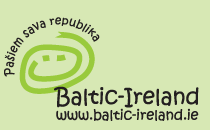The Freedom Monument in Riga



 The Freedom Monument (Latvian: Brīvības piemineklis) is a memorial located in Riga, Latvia honoring soldiers killed during the Latvian War of Independence (1918-1920). It is considered an important symbol of the freedom, independence, and sovereignty of Latvia. Unveiled in 1935, the 42-metre (138 ft) high monument of granite, travertine, and copper often serves as the focal point of public gatherings and official ceremonies in Riga.
The Freedom Monument (Latvian: Brīvības piemineklis) is a memorial located in Riga, Latvia honoring soldiers killed during the Latvian War of Independence (1918-1920). It is considered an important symbol of the freedom, independence, and sovereignty of Latvia. Unveiled in 1935, the 42-metre (138 ft) high monument of granite, travertine, and copper often serves as the focal point of public gatherings and official ceremonies in Riga.
The sculptures and bas-reliefs of the monument, arranged in thirteen groups, depict Latvian culture and history. The core of the monument is composed of tetragonal shapes on top of each other, decreasing in size towards the top, completed by a 19-metre (62 ft) high travertine column bearing the copper figure of Liberty lifting three gilded stars. The concept for the monument first emerged in the early 1920s when the Latvian Prime Minister, Zigfrīds Anna Meierovics, ordered rules to be drawn up for a contest for designs of a “memorial column”. After several contests the monument was finally built at the beginning of the 1930s according to the scheme “Shine like a star!” submitted by Latvian sculptor Kārlis Zāle. Construction works were financed by private donations.
During World War II, Latvia was annexed by the Soviet Union and the Freedom Monument was considered for demolition, but no such move was carried out. Soviet sculptor Vera Mukhina is sometimes credited with the rescue of the monument, possibly because she considered it to be of the highest artistic value. Soviet propaganda attempted to alter the symbolic meaning of the monument to better fit with Communist ideology, but it remained a symbol of national independence to the general public. Indeed, on June 14, 1987 about 5,000 people gathered at the monument to commemorate the victims of the Soviet regime and to lay flowers. This rally renewed the national independence movement that culminating three years later in the re-establishment of Latvian sovereignty. The monument is located in the center of Riga on Brīvības bulvāris (“Freedom Boulevard”), near the old town of Riga. In 1990 a section of the street around the monument, about 200 metres (660 ft) long, between Rainis and Aspazija boulevards, was pedestrianized, forming a plaza. Part of it includes a bridge over the city’s canal, once a part of the city’s fortification system, which was demolished in the 19th century to build the modern boulevard district. The canal is 3.2 kilometres (2.0 mi) long and surrounded by parkland for half of its length. The earth from the demolition of the fortifications was gathered in the park and now forms an artificial hill with a cascade of waterfalls to the north of the monument. The Boulevard district east of the park is the location of several embassies and institutions, of which the closest to the Freedom Monument are the German and French embassies, the University of Latvia and Riga State Gymnasium No.1.
Situated in the park near the monument to the south is the National Opera House with a flower garden and a fountain in front of it. Opposite the opera house on the western part of plaza near the old town, is a small café and the Laima clock. The clock was set up in 1924, and in 1936 it was decorated with an advertisement for the Latvian confectionery brand “Laima”, from which it took its name; it is a popular meeting spot.
Originally it was planned that an elliptical plaza would be built around the foot of the monument, enclosed by a granite wall 1.6 metres (5.2 ft) high, with benches placed inside it, while a hedge of thujas was to be planted around the outside. This project was however not carried out in the 1930s. The idea was reconsidered in the 1980s but shelved again.
reklāma: reklama@baltic-ireland.ie redakcija: info@baltic-ireland.ie








Very interesting blog, i have added it to my fovourites, greetings